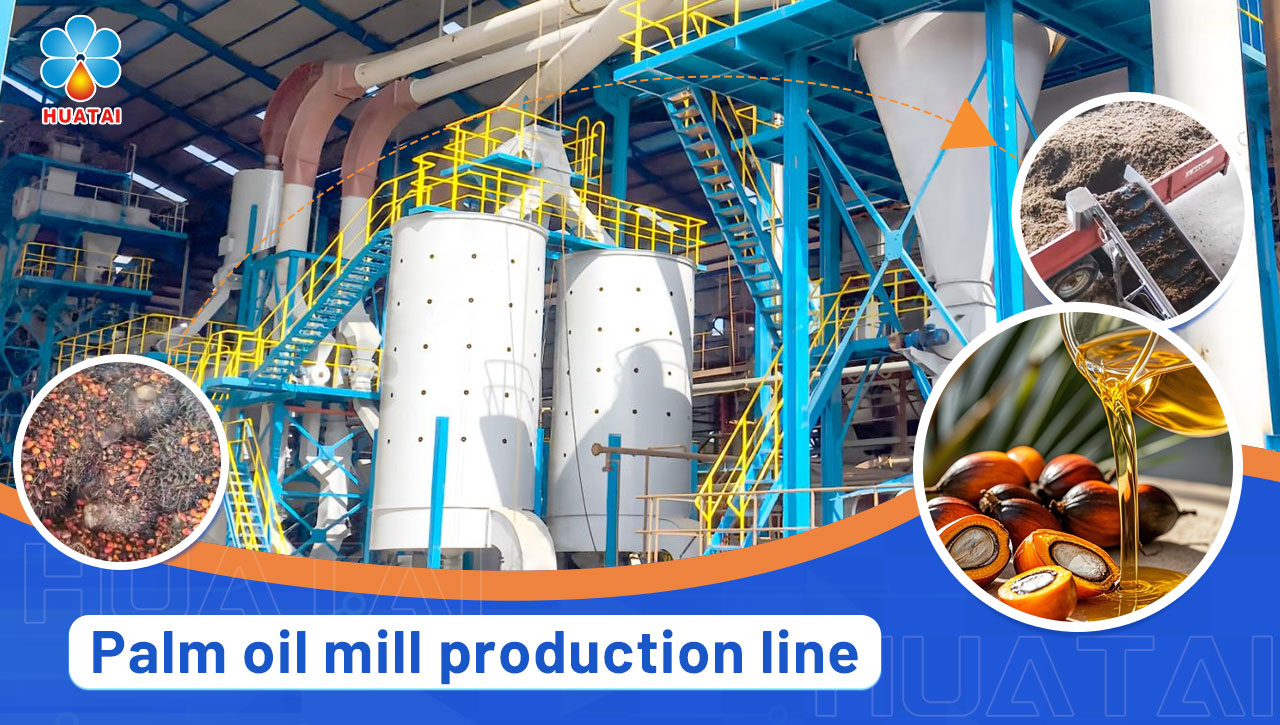China leading palm oil mill plant machine manufacturer and supplier
Email:info01@cnoilmachine.com
The refining of crude palm oil is similar to the refining process of other oils. After filtering, the crude oil is degummed, deacidified, decolorized, deodorized and other processes are carried out by the oil refining equipment to separate and remove phospholipids, free fatty acids, pigments, and odor substances in the oil to improve the grade.
Palm oil is composed of triglycerides with different melting points. Separating stearin and olein with different melting points at the required temperature is called fractionation. Different uses have different requirements for the stearin and olein content of palm oil. The olein content affects the stability of palm oil. The lower the content, the longer the storage time. The stearin content affects the clarity of palm oil. The higher the content, the more turbid the oil. The separated olein (liquid palm oil) can be sold on the market, and stearin (solid palm oil) can replace the raw materials of cocoa butter and margarine. Palm oil refining and fractionation are two different processing processes, each with its own application areas.
Palm oil refining and fractionation are two different processing processes, each with its own application areas.
For crude palm oil, phospholipids, proteins, sticky substances, sugar-bound esters, etc. are common peptized impurities, which will affect the stability of oil and fat, and will also affect the corresponding links in the oil refining process, resulting in a decline in the quality of finished oil. Just like the gum will cause excessive emulsification of oil in the alkali refining process, and the oil and soap cannot be separated well, resulting in oil loss. Therefore, oil mills need to pay special attention to the refining process of crude palm oil.
Palm oil refining is divided into physical refining and chemical refining. The process includes steps such as hydration degumming, alkali refining deacidification, decolorization, and high-temperature deodorization. The main difference between physical refining and chemical refining is the different separation methods of free fatty acids. In the physical refining method, deacidification occurs in the deodorization process, while in the chemical refining method, it occurs in the alkali neutralization process.
Physical refining is mainly based on the fact that free fatty acids and triglycerides are highly volatile under high temperature and low pressure conditions. First, crude palm oil is mixed with water or phosphoric acid aqueous solution and heated, phospholipids and some polar lipids are separated by centrifugation, and then activated carbon or white clay is used to separate pigment substances. Then, saturated steam is used to separate free fatty acids, triglycerides and volatile oxidation products, and neutral oil droplets are taken out.
Whether it is chemical refining or physical refining, reasonable operation and strict control of production conditions can ensure the quality of oils and improve the stability of edible oils. When palm oil is used for frying, the food flavor obtained is good. Here we recommend the machinery manufactured by Huatai Grain and Oil Machinery Equipment Factory. The refined palm oil is of high quality and has good frying stability. The machinery and equipment are deeply recognized by customers in many foreign oil mills. To purchase palm oil refining production line equipment, go to Henan Huatai Grain and Oil Machinery Factory. The manufacturer has been engaged in grain and oil equipment processing for more than 30 years and has made machinery and equipment with heart. It is worthy of your trust.
If you are interested in our palm oil machine and palm oil mill plant. You can contact us through online consultation, filling out the form below, email, phone, etc. Our engineers will customize the most suitable plan and best price for you.